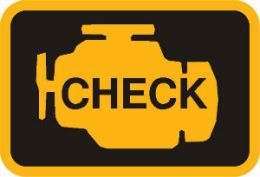When your car’s “Check Engine” light comes on, it’s usually accompanied by a sinking feeling in the pit of your stomach. The light could mean a costly problem, like a bad catalytic converter, or it could be something minor, like a loose gas cap. But in many cases, it means at minimum that you’ll be visiting your mechanic to locate the malfunction and get the light turned off.
Thank you for reading this post, don't forget to subscribe!The Check Engine light, more formally known as the Malfunction Indicator Lamp (MIL), is a signal from the car’s engine computer that something is wrong. Older vehicles may not have this, but any newer vehicle is equipped with a tiny all-knowing computer that will be your lifeline in communicating any problem with how the engine is running. Your Tire and Automotive service department can diagnose the problem, but there are ways to preview what the problem might be.
Prior to 1996, carmakers had their own engine diagnostic systems, primarily to ensure their cars were compliant with Environmental Protection Agency (EPA) pollution-control requirements. Starting with model-year 1996, automakers standardized their systems under a protocol called OBD-II, which stipulated a standardized list of diagnostic trouble codes (DTC) and mandated that all cars provide a universal connector to access this information. It’s usually located under the steering column and is easy to access. What this means for you is, there is a standardized way of your car actually telling you when there is a problem.
Experts say that many drivers confuse the “service required” light on the gauge cluster for the Check Engine light. These warning lights are unrelated. The service required light just means the car is due for an oil change or other routine maintenance. It is not the indicator of trouble that the Check Engine light is, but routine maintenance may prevent engine failure or issues.
Check Engine lights come in orange, yellow or amber, depending on the manufacturer. If the light begins flashing, however, it indicates a more serious problem, such as a misfire that can quickly overheat the catalytic converter. These emissions devices operate at high temperatures to cut emissions, but can pose a fire hazard if faulty. Regardless of severity, it’s a good idea to get any and all alerts from your check engine light looked at. A quick stop in for a diagnostics reading may prevent further damage and save you from a breakdown.
Don’t Ignore That Light! Get in to your mechanic as soon as it turns on to prevent any damage to your vehicle and get you back on the road fast!


